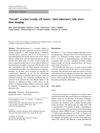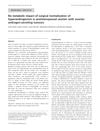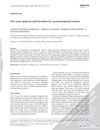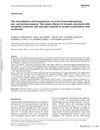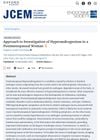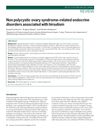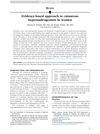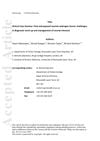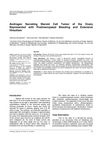Discriminating Between Virilizing Ovary Tumors and Ovary Hyperthecosis in Postmenopausal Women: Clinical Data, Hormonal Profiles, and Imaging Studies
April 2017
in “
European journal of endocrinology
”
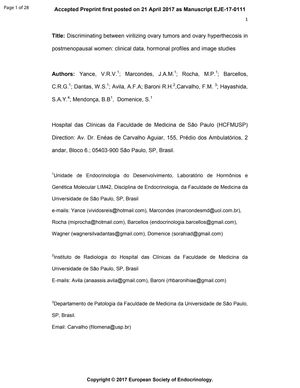
TLDR The research found that MRI and certain hormone levels can help tell apart ovarian tumors from hyperthecosis in postmenopausal women, but tissue analysis is still needed for a definite diagnosis.
The study analyzed 34 postmenopausal women, 13 with virilizing ovarian tumors (VOT) and 21 with ovarian stromal hyperthecosis (OH), to distinguish between these conditions which present with similar clinical and hormonal profiles. Clinical signs of virilization were more common in the VOT group. Hormonal analysis revealed that women with VOT had significantly higher testosterone and estradiol levels, and lower gonadotropin levels, but there was significant overlap between the groups. Pelvic MRI proved to be more accurate than ultrasound, with an 82% accuracy rate for diagnosing VOT. The best hormonal criteria for differentiation were testosterone levels >312.5 ng/dL and LH levels <10.8 IU/L. Despite these findings, histopathological analysis remained the definitive method for diagnosis. The study emphasized the need to use a combination of clinical, hormonal, and imaging data for accurate diagnosis, but confirmed that histopathology is essential for a definitive diagnosis.
